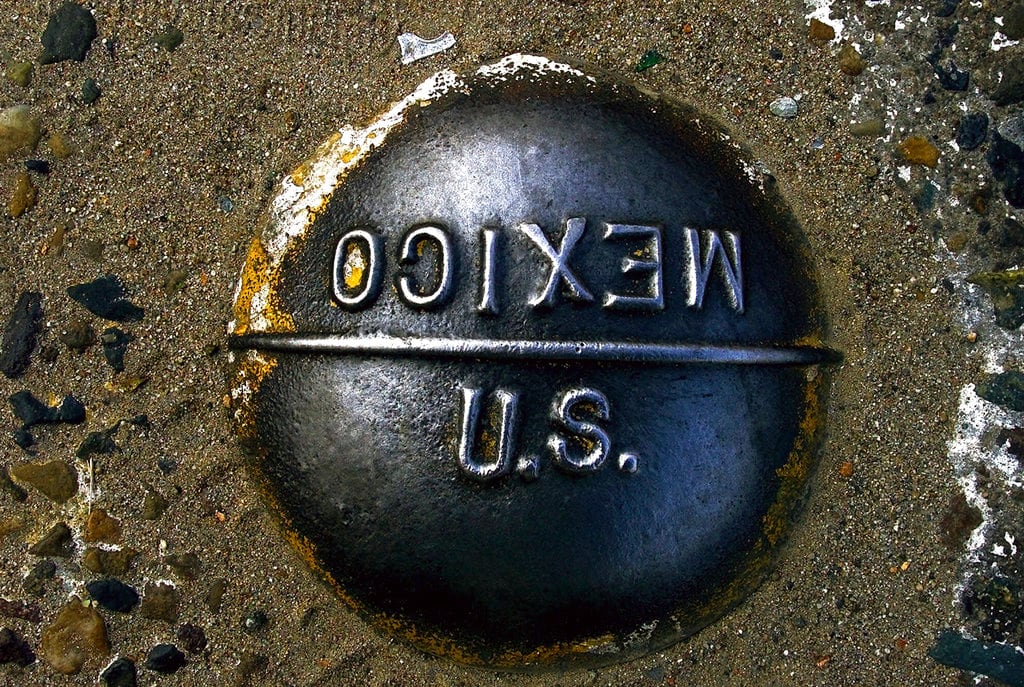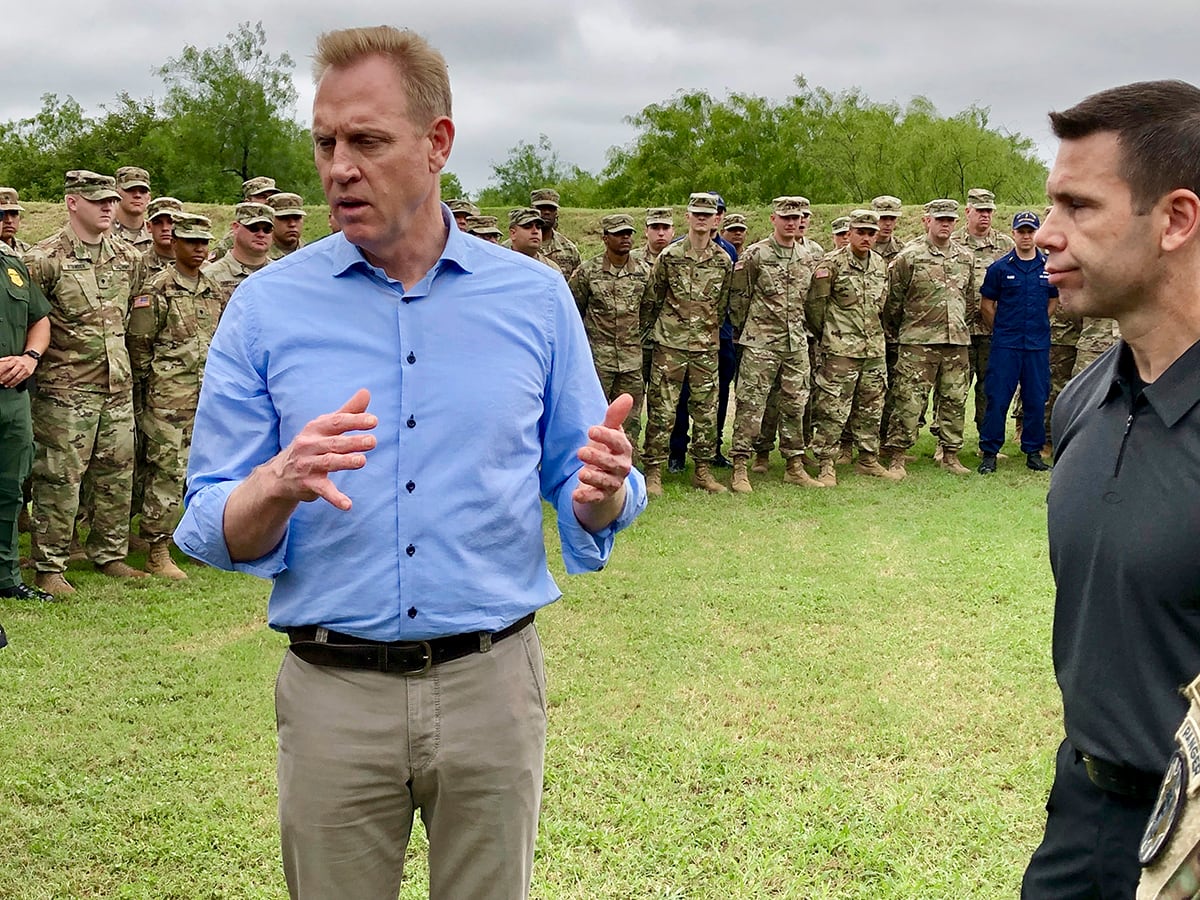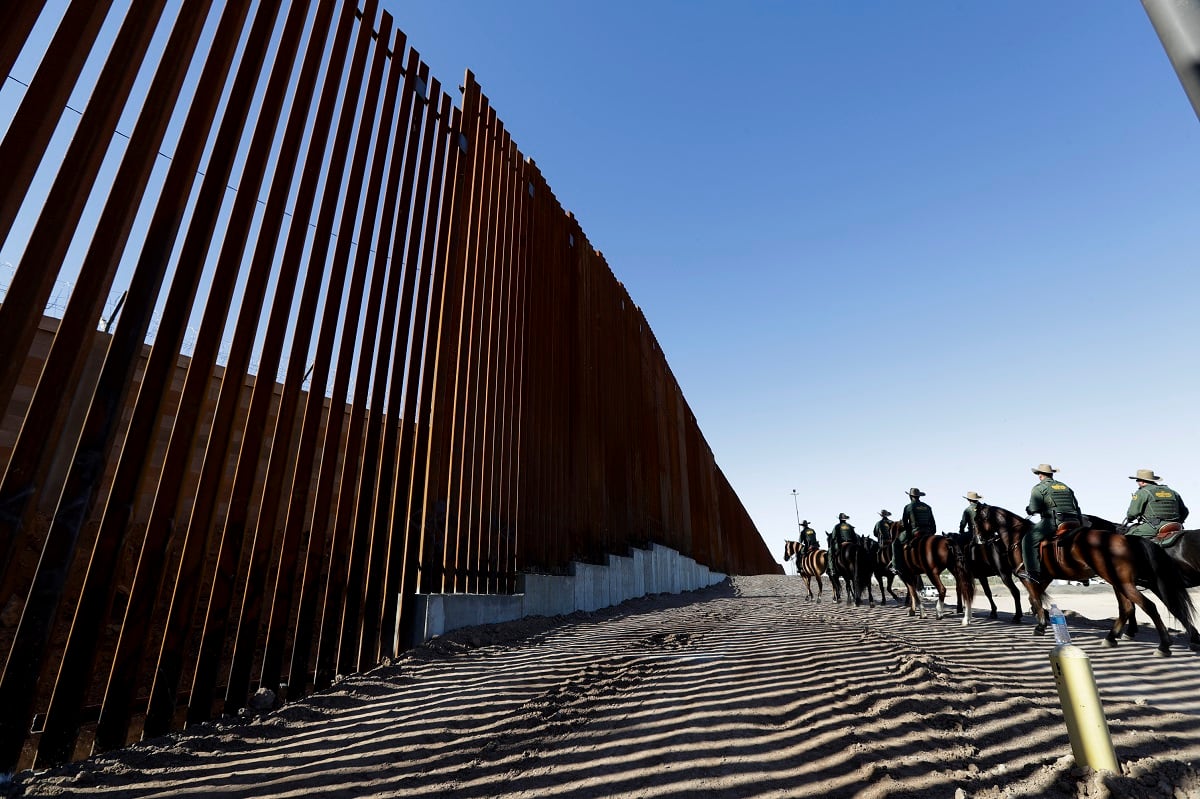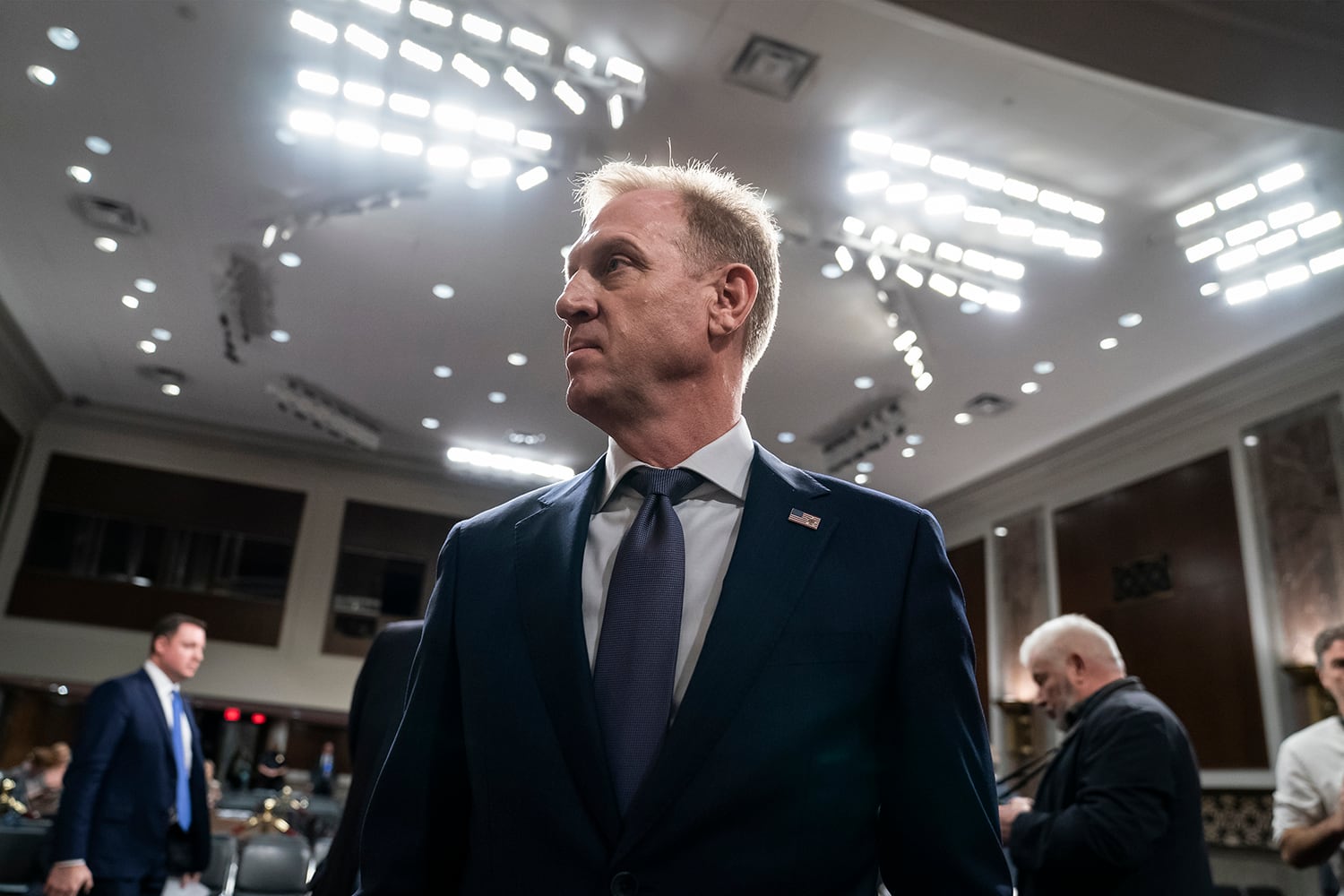MCALLEN, Texas — Acting Defense Secretary Patrick Shanahan visited a border city in Texas on Saturday and said he intends to accelerate planning to secure the border and bolster the administration’s ability to accomplish that without the Pentagon’s continuous help.
He also offered assurances to perhaps two dozen Border Patrol agents and other officials at the McAllen Border Patrol Station that the Pentagon would not withdraw its military support prematurely.
"We're not going to leave until the border is secure," he said, adding, "This isn't about identifying a problem. It's about fixing a problem more quickly."
Shanahan told Congress this past week that there are 4,364 military troops on the border, including active-duty and National Guard. They are erecting barriers, providing logistics and transportation service and other activities in support of Customs and Border Protection. The troops are prohibited from performing law enforcement duties. Troops have been deployed on the border since last October and are committed to being there through September.
RELATED

While flying to Texas, he dismissed any suggestion that active-duty forces will extend their mission for the long haul. "It will not be indefinite," he told reporters traveling with him.
Shanahan also said he has instructed a two-star Army general, Ricky Waddell, to develop a plan soon that will answer this question: "How do we get more badges back to the border?" — a reference to ensuring Homeland Security Department is fully capable of securing the border, its core mission.
Shortfalls in personnel and other resources have prompted DHS to periodically ask for the military's help on the U.S.-Mexico border, without a plan for how to fix the underlying resource problems.
"What we want is for DHS to be effective and stand alone," Shanahan said, with the Pentagon always available to help in an emergency, as it has in the past.

DHS on Friday submitted another request for Pentagon assistance, defense officials said Saturday. That request, which has not previously been disclosed, is for shelter for detained migrants, and would include tents to be set up but not secured by an undetermined number of military troops, according to the officials, who spoke on condition of anonymity to discuss internal planning.
Shanahan announced on Friday that he was transferring $1.5 billion from numerous defense projects, including $604 million originally intended for use in support of Afghan security forces, to a Pentagon counterdrug fund that will help finance construction of barriers on the U.S.-Mexico border. That is in addition to $1 billion the Pentagon transferred for wall construction in March.
RELATED

Shanahan has supported the use of active-duty troops, in addition to the National Guard, to bolster CPB efforts to handle surging numbers of Central American migrants seeking to cross the border. But recently he has hinted at impatience with the lack of a long-term strategy for ensuring border security.
In congressional testimony May 1, Shanahan said he and Gen. Joseph Dunford, chairman of the Joint Chiefs of Staff, have been considering the question of how long the military will be needed at the border and how best it can support that need.
"The question he and I are trying to answer," Shanahan said, "is, how long will we be at the border." He added, "We really need to get back to our primary missions and continue to generate readiness" to undertake conventional military operations.
On May 3, Shanahan told reporters that the border crisis had developed more quickly than anyone had anticipated, putting extra pressure on DHS.
"I don't think anybody thought it would be this bad, the situation would deteriorate like it has, and that distress would be as high on those front-line (DHS) employees," he said.
Many Democrats have questioned the use of active-duty troops on the border.
"The longer the Southwest border mission continues, the line of demarcation starts to blur in terms of where we're drawing a line saying this is not a military responsibility, this is law enforcement, immigration, internal security responsibility," Sen. Dick Durbin, D-Ill., said at a recent hearing.
RELATED

As a prelude to the trip, the White House on Thursday announced that Trump intends to nominate Shanahan as defense secretary, ending months of speculation about Pentagon leadership. He has served in an interim capacity since Jan. 1, an unprecedented period of uncertainty at the helm of the Pentagon.
Trump elevated him from deputy secretary to replace Defense Secretary Jim Mattis, who resigned in December.
The White House has never explained why it took Trump so long to decide to nominate Shanahan, a former Boeing Co. executive. Trump himself has said he likes to keep Cabinet members in an acting status because gives him more flexibility, although it also frustrates the Senate's efforts to exercise its constitutional role of providing advice and consent.
In March, the Defense Department’s inspector general investigated accusations that Shanahan had shown favoritism toward Boeing during his time as deputy defense secretary, while disparaging Boeing competitors. The investigation appeared to stall his nomination, but the internal watchdog wrapped up the inquiry in April and cleared Shanahan of any wrongdoing.





